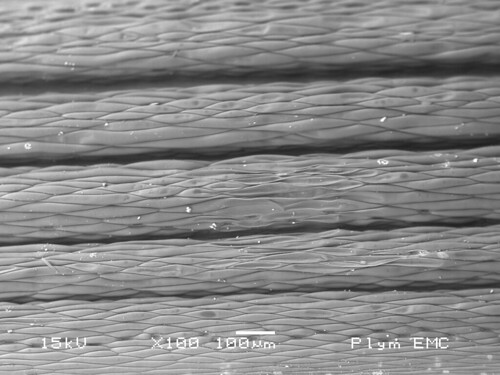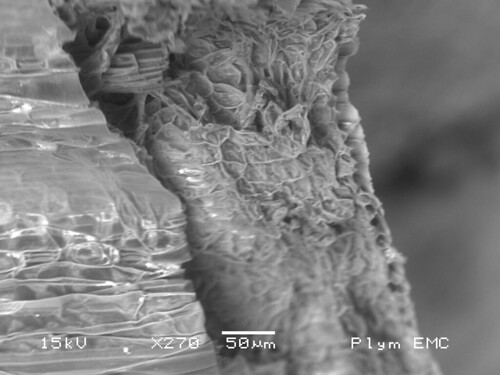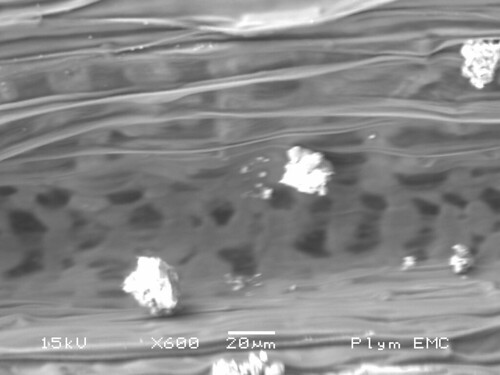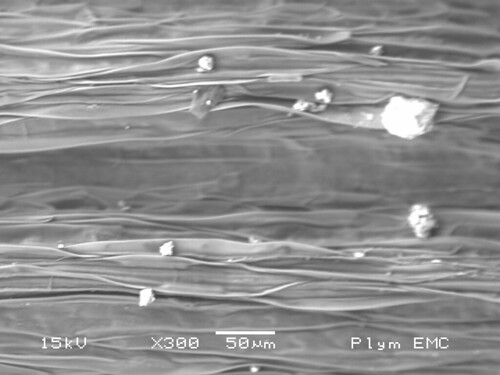s-os
Posted: 7 February 2008 Filed under: Invisible Architecture, Masters | Tags: java, Masters Leave a commentSo s-os started last night at Plymouth Arts Centre and provides an operating system for the social life of Plymouth. As the site says “Whilst town planners and architects model the ‘physical’ City and Highways Department’s model the ‘temporal’ ebb and flow of traffic in and around the City, S-OS will model the ‘invisible’ social exchanges of the City’s inhabitants. Plymouth Arts Centre will be converted into a ‘Central Processing Unit’ to run S-OS as a RealLife Social Operating System, generating creative interventions and strategic manifestations on, by and for the citizens of Plymouth.”
My contribution to it is sosHappis which is a mobile phone app that measures your level of happiness. Based on Opta stats used to measure a footballer’s performance within a match, you simply pick the indicators that have happened to you on the day and your personal happindex is generated. You can then load them in onto the main server and an overall figure for the city is calculated. Download it from here and give it a go.
The exhibition runs until 6th April, more information can be found here.
Cory Arcangel
Posted: 14 December 2007 Filed under: Histories & Futures, Masters, Ramblings | Tags: cory arcangel, exhibition, Masters, nintendo Leave a commentJust got back from visiting an exhibition of Cory Arcangel’s work at Spacex. I really liked I Shot Andy Warhol which he made by modding Hogan’s Alley on a Nintendo cartridge. In the game, the player has to shoot Andy Warhol and avoid hitting the Pope, Flavor Flav and Colonel Sanders. Other pieces on show were:
Colors where he plays the film Colors one line of pixels at a time
a couple thousand short films about Glenn Gould which uses YouTube clips of amateur musicians to recreate Bach’s Goldberg Variations
Sans Simon which is a video where he edited out Paul Simon by covering up the singer with his hand
Two Keystone Projectors which is 2 projectors who have had their displays distorted by altering their keystoning and displaying the blue screen normally seen when a VCR is empty
The Bruce Springsteen Glockenspiel Addendum which is a remix of Springsteen’s Born to Run album with added glockenspiel. The whole remix was given away free at the exhibition.
Proposal
Posted: 14 December 2007 Filed under: Histories & Futures, Masters | Tags: gaming, hack, Masters Leave a commentFor my project, I have decided to revisit something that I had initially looked at some time ago. Still keeping with the theme of gaming, I’ve decided to drop the idea of using a real-world game or a sport to generate the digital in favour of using a computer game as an instrument or even an orchestra to generate sound. I have always liked the work of Alison Mealey who uses Unreal Tournament to generate art. Some of her work can be seen in this interview with artificial.dk – http://www.artificial.dk/articles/alison.htm. She uses the positions of the bots within the game to draw coloured circles and every time there is a death in the game she uses it to draw a black circle. I have also liked and have been inspired by the work of Friedrich Kirschner and his person2184 series of films which, as with Alison, he made using Unreal Tournament. Unlike her though, he uses the inbuilt editor to construct the set and then plays and records the film within the game. With both of them, I like how they use the game as the tool for their work which is something I want to explore.
I want to extract the data from a live game and feed it into PD or Max/MSP to generate sound. I’m also keen to explore the idea of “learning” the game as you would an instrument. I’m not a particularly strong gamer and so it could be interesting to hear the sounds made at the start of project before I learn to play and compare them to the sounds made once I’ve mastered it.
Electron Microscope
Posted: 13 December 2007 Filed under: Invisible Architecture, Masters | Tags: Masters Leave a commentI’ve just had a brilliant day playing with an electron microscope. I took a blade of grass in as a representation of the space I’d just mapped. I got some pretty good pictures as you can see below. As there was moisture in the grass, we couldn’t film it in a complete vacuum which is how everyone’s was shot but in a low vacuum which was still pretty close to one compared to normal atmospheric conditions. The reason for having to do that was the moisture was evaporating as I was playing with the microscope and so that grass was essentially decaying. I mainly took photos so that the detail was fairly visible but I was also wanted to see how close I could get before the photo could be of anything and managed to get to 600 times.




Some more thoughts
Posted: 12 December 2007 Filed under: Histories & Futures, Masters | Tags: gaming, hack, Masters, music Leave a commentOk, still thinking about a game but this time I’m considering using a chess match. I think the strategies that are used in chess could be quite interesing when applied to software development. I’ve recently read about a chess game Duchamp played with John Cage at a concert called Reunion where the music was produced by a series of photoelectric cells underneath each square of the chessboard which were sporadically triggered during normal game play. I had originally considered just mapping the moves but maybe I could hack one of those chess computers and connect it up to a “normal” computer to register the moves and generate the code dynamically.
Some ideas
Posted: 11 December 2007 Filed under: Histories & Futures, Masters | Tags: Masters Leave a commentBeen thinking about my project and I’m really getting into the idea of using a game to generate code. I’m considering using a sport as I like the idea of the analog creating the digital. Maybe use the plays that take place during a football match can dictate what happens to some data. How or what the data will be I’ve yet to decide upon.
Map
Posted: 10 December 2007 Filed under: Invisible Architecture, Masters | Tags: football, Masters Leave a commentI’m quite interested in football (yeah, thought that might come as a bit of a shock) and I like how fans always reminisce about the old days. Hot on the outside frozen on the inside pies, tepid bovril, old players, terraces, the list is endless and yet football has moved on so much since those days. Not just in the game itself but the whole business of football has exploded to the point that the match itself is almost secondary.
Below is my attempt at mapping these “additional activities” by including elements of the past and the present.
A Game of Two Halves 6.9Mb
Quick update
Posted: 9 December 2007 Filed under: Histories & Futures, Masters | Tags: gaming, Masters Leave a commentI’ve had a couple of meetings with Geoff so far. We’ve discussed my “interest” in football and have expanded it to gaming in general in particular historical gaming theory. I’m gonna have a look at Von Neumann as he seems to be the ‘father’ of gaming theory. Geoff also told me that Duchamp was a very accomplished chess player so that could be a good area to research. Alex Galloway of the Radical Software Group has created an online version of the Game of War which I also intend to have a look at.
So I’m gonna try and see if I can make football or gaming as a metaphor for software development or maybe even software development as a metaphor for football/gaming.
Project update
Posted: 4 December 2007 Filed under: Masters, Negotiated Practice A | Tags: Masters Leave a commentI’ve been a bit behind with documenting everything coz of other stuff, so here’s a quick update on the story of NegA so far….
After weeks of discussion, we’ve now decided to create an online curation tool called Curatos which will allow artists and curators to create collections of work by calling in both their own material as well as accessing images and video in online repositories such as Flickr and YouTube. I’m only gonna document my involvement I think, for progress on the project as a whole, please visit the group’s blog here.
Invisible Arch update
Posted: 3 December 2007 Filed under: Invisible Architecture, Masters | Tags: Masters Leave a commentSo I’ve had a couple of meetings with Chris. In the first he did his now infamous triangle method of getting at the core of you or rather me. We talked about football, open source/hacking and my near evangelical stance on accessibility. We also chatted about the PDFs that he sent out and I mentioned that I really liked text on the Poliscar, how the homeless are the true public of a city. They spend their entire time in public spaces and yet they are constantly moved on and are excluded from “normal” civic life. Coz of that, Chris suggested that I’m not really about inclusion but more about exclusion and why people are excluded. I really liked this, I guess its more of the dark side of what I’ve been trying to do, especially with my professional work.
The 2nd meeting was more about my map which is based on football or rather the stuff that goes on around the game like sponsorship, catering etc. I’ve got this awesome book called A Game of Two Halves: Football Yesterday and Today which does a compare and contrast of the game from yesteryear to now, well Japan/South Korea 2002 but lets not split hairs eh? Something that has always interested me is this blurry nostalgia opinion we have of the game. Piping hot pies that are still frozen on the inside, lukewarm Bovil, terracing and yet football is nothing like that now. It’s more likely to be a Ginsters, 2 choices of coffee and a sweaty plastic seat but we still persist with this other image. Chris suggested that I have a word with Gianni as he’s doing some work on memory and I seem to be edging towards a collective memory type of thing.